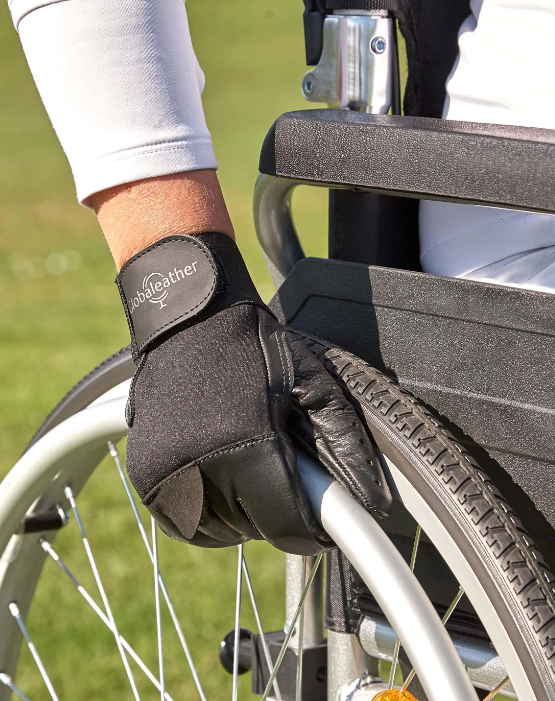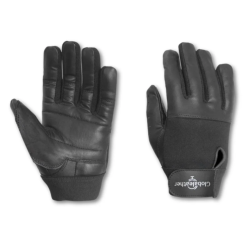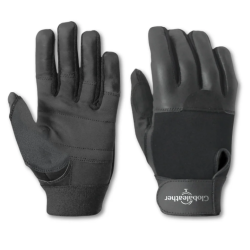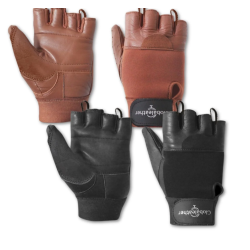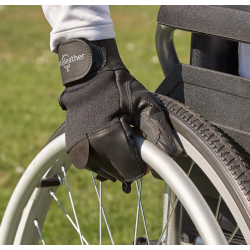
The Guide to Wheelchair Gloves: Benefits, Types, and Choosing the Right Pair
Introduction
For wheelchair users, mobility and independence are paramount. However, continuous use of a wheelchair can cause strain on the hands, leading to blisters, calluses, and discomfort. One of the most effective solutions to this issue is using wheelchair gloves. Designed to offer protection, comfort, and improved grip, wheelchair gloves are an essential accessory for both daily users and athletes. In this comprehensive guide, we will explore the benefits of wheelchair gloves, different types available, and tips for choosing the best pair for your needs.
Benefits of Wheelchair Gloves
Enhanced Grip and Control
One of the primary benefits of wearing wheelchair gloves is the enhanced grip they provide. Wheelchair rims can become slippery due to sweat, rain, or general wear and tear, making it difficult to maintain control. Gloves with textured surfaces, such as rubber or silicone grips, improve traction and allow for smoother navigation, especially on different terrains.
Protection from Blisters and Calluses
Repeatedly propelling a wheelchair without gloves can lead to friction, which causes blisters and calluses. These injuries can be painful and may even lead to infections if not properly cared for. Wheelchair gloves act as a barrier between the hands and the push rims, reducing the chances of skin damage and ensuring a more comfortable experience.
Reduced Hand Fatigue
Wheelchair users often experience hand fatigue due to continuous pushing. Gloves with padding and ergonomic designs help distribute pressure evenly across the hands, minimizing strain and reducing overall fatigue. This is particularly beneficial for individuals who rely on their wheelchairs for extended periods throughout the day.
Weather Protection
Extreme weather conditions can significantly affect wheelchair users. During cold weather, hands may become stiff and less responsive, while hot conditions can cause excessive sweating, leading to reduced grip. Winter wheelchair gloves offer insulation to keep hands warm, while summer variants are designed to wick away moisture and improve airflow.
Shock Absorption
Riding over rough terrain, cobblestone streets, or uneven sidewalks can lead to vibrations and shocks that are transmitted to the hands. Wheelchair gloves, especially those with gel or foam padding, help absorb these shocks, providing a smoother and more comfortable ride.
Improved Hygiene
Wheelchair rims come into contact with various surfaces, picking up dirt, dust, and bacteria. Wearing gloves minimizes direct contact with these contaminants, promoting better hand hygiene and reducing the risk of infections.
Types of Wheelchair Gloves
Wheelchair gloves come in various styles and materials, each suited for different needs and preferences. Below are the most common types:
Watch this video for an advanced guide on what glove is the most beneficial to you.
Full-Finger Gloves
Full-finger gloves offer complete hand coverage, making them ideal for cold weather and individuals seeking maximum protection. These gloves often come with additional padding and reinforced palm areas for enhanced durability.
Fingerless (Half-Finger) Gloves
Fingerless gloves, also known as half-finger gloves, provide protection for the palms while allowing fingers to remain exposed. This design offers better breathability and dexterity, making them suitable for warmer climates and users who require a firm grip for tasks like writing or handling small objects.
Gel-Padded Gloves
For those who experience joint pain or frequently navigate rough terrain, gel-padded gloves offer excellent shock absorption. The gel padding helps distribute pressure evenly, reducing strain on the hands and providing additional comfort.
Leather Wheelchair Gloves
Leather gloves are highly durable and provide a strong grip, making them a popular choice among active wheelchair users. They mold to the shape of the hand over time, offering a custom fit. However, they may require regular maintenance to keep them in good condition.
Sports and Racing Gloves
Athletes and active wheelchair users often require specialized gloves with reinforced padding and high-grip surfaces. These gloves are designed to withstand intense use and offer superior performance during sports and wheelchair racing.
How to Choose the Right Wheelchair Gloves
Watch this video for an advanced guide on what glove is the most beneficial to you.
Selecting the perfect pair of wheelchair gloves depends on several factors, including comfort, durability, and personal preference. Here are some key considerations:
Material
Leather: Offers durability and excellent grip but may require maintenance.
Synthetic Fabrics: Lightweight, breathable, and easy to clean.
Neoprene: Provides flexibility and is often used in water-resistant gloves.
Gel or Foam Padding: Enhances comfort and shock absorption.
Fit and Comfort
A well-fitting glove should be snug but not too tight, allowing for free movement without restricting circulation. Consider adjustable straps or elastic cuffs for a secure fit.
Grip and Traction
Look for gloves with rubberized or textured palms for improved grip, especially if you navigate through wet or slippery surfaces.
Weather Resistance
Choose gloves based on the climate you live in. If you frequently use your wheelchair outdoors, opt for waterproof or insulated gloves for added protection.
Ease of Use
Consider how easy it is to put on and take off the gloves. Some gloves feature Velcro closures or pull tabs to assist individuals with limited hand mobility.
Maintenance and Durability
Regular use can wear out gloves over time, so it's essential to choose a durable pair that can withstand daily wear and tear. Check whether the gloves are machine washable for easy maintenance.
Caring for Your Wheelchair Gloves
To extend the lifespan of your wheelchair gloves, follow these care tips:
Regular Cleaning: Wash gloves according to the manufacturer's instruction to remove dirt and sweat buildup.
Proper Storage: Store gloves in a dry place to prevent mold and mildew.
Inspect for Wear and Tear: Replace gloves when you notice significant wear, such as holes or reduced grip.
Condition Leather Gloves: Use a leather conditioner to maintain flexibility and prevent cracking.
Conclusion
Wheelchair gloves are an invaluable accessory that enhances mobility, comfort, and hand protection. Whether you're an everyday wheelchair user or an athlete, investing in a high-quality pair can significantly improve your overall experience. By considering factors such as grip, material, fit, and weather resistance, you can find the perfect gloves that meet your specific needs.
If you're looking to purchase wheelchair gloves, be sure to explore reputable brands that offer high-quality options tailored for different lifestyles. With the right gloves, you can enjoy greater control, reduced hand fatigue, and an overall improved wheelchair experience.

